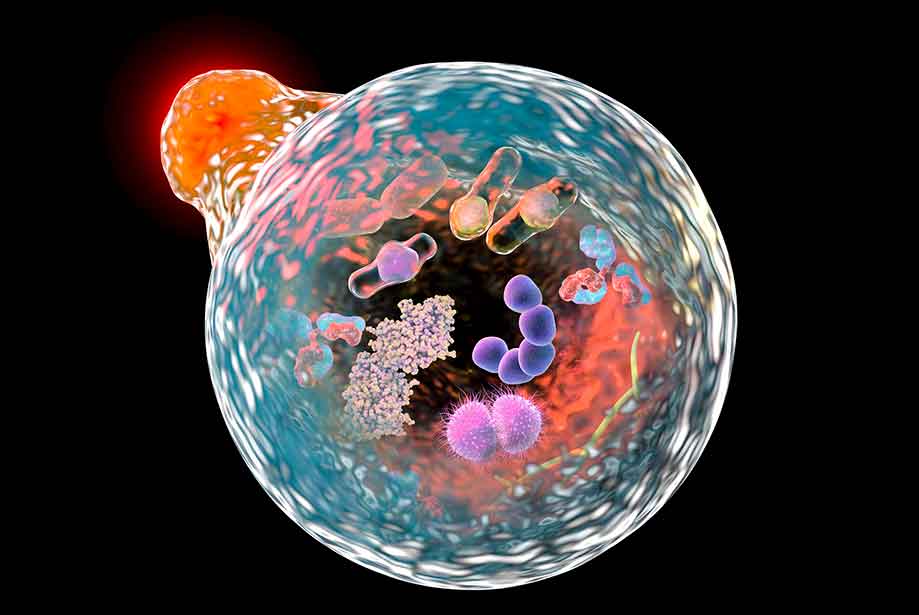

Autophagy
June 22, 2018
AUTOPHAGY
The 2016 Nobel Prize winner in Medicine/Physiology was Yoshinori Ohsumi from Japan. He discovered and explained the catabolic mechanism of autophagy as it relates to disease and aging. The term autophagy denotes self-eating. Which in layman’s terms has been explained as “your cells create membranes that hunt out scraps of dead, diseased, or worn-out cells; gobble them up; strip’em for parts; and use the resulting molecules for energy or to make new cell parts.” Dr. Colin Champ, radiation oncologist also explains it well: “Think of it as our body’s innate recycling program. Autophagy makes us more efficient machines to get rid of faulty parts, stop cancerous growths, and to stop metabolic dysfunction, like obesity and diabetes.” By boosting your body autophagy process you dampen inflammation, slow down the aging process, and optimize biologic function.
The concept emerged during the 1960’s, when researchers first observed that the cell could destroy its own contents by enclosing it in membranes, forming sack like vesicles that were transported to a recycling compartment, called the lysozyme, for degradation. In the early 1990’s, Yoshinori Ohsumi used baker’s yeast to identify genes essential for autophagy. He went on to elucidate the underlying mechanisms for autophagy in yeast and showed that similar sophisticated machinery is used in human cells. These discoveries have led to a new paradigm in our understanding of how the cell recycles its content. His discoveries opened the path to understanding the fundamental importance of autophagy in many physiological process, such as in the adaptation to starvation or response to infection. Mutations in the autophagy genes can cause disease, and the autophagic process is involved in several conditions including cancers, neurological disease, and Type 2 DM.
We now know that autophagy controls important physiological functions where cellular components need to be degraded and recycled. Autophagy can rapidly provide fuel for energy and building blocks for renewal of cellular components, and is essential for the cellular response to starvation and other types of stress. After infection, autophagy can eliminate invading intracellular bacteria and viruses. Autophagy contributes to embryo development and cell differentiation. Cells also use autophagy to eliminate damaged proteins and organelles, a quality control mechanism that is critical for counteracting the negative consequences of aging.
Things that boost autophagy include the very things we stress here at TLC.
- Exercise, especially high intensity interval training, triggers autophagy by creating mild damage to muscles and tissues, that then your body repairs.
- Intermittent fasting, that is 16-18 hours every day, triggers autophagy because fasting is a biological stressor. Any consistent fasting regimen helps but intermittent fasting seems to be the easiest to adhere to. On a side note, there is compelling evidence that shows intermittent fasting can decrease free radicals. Evidence shows that when you supply fuel to your mitochondria at a time when you don’t need it, they leak a large number of electrons that liberate reactive oxygen species as free radicals, which damages mitochondrial and nuclear DNA. This damaged DNA creates cancer cells.
- High fat, low carb diet induces ketosis, which in turn helps to boost autophagy. Nutritional ketogenesis occurs with a diet that is 60-70% fat, 20-30% protein, while carbs are kept below 50 grams; however similar benefits are noted when carbs did not exceed 30% of the overall caloric intake. Too much protein can inhibit autophagy, limit to one half gram of protein per pound of lean body mass, which is about 40-70 grams per day for most people.


